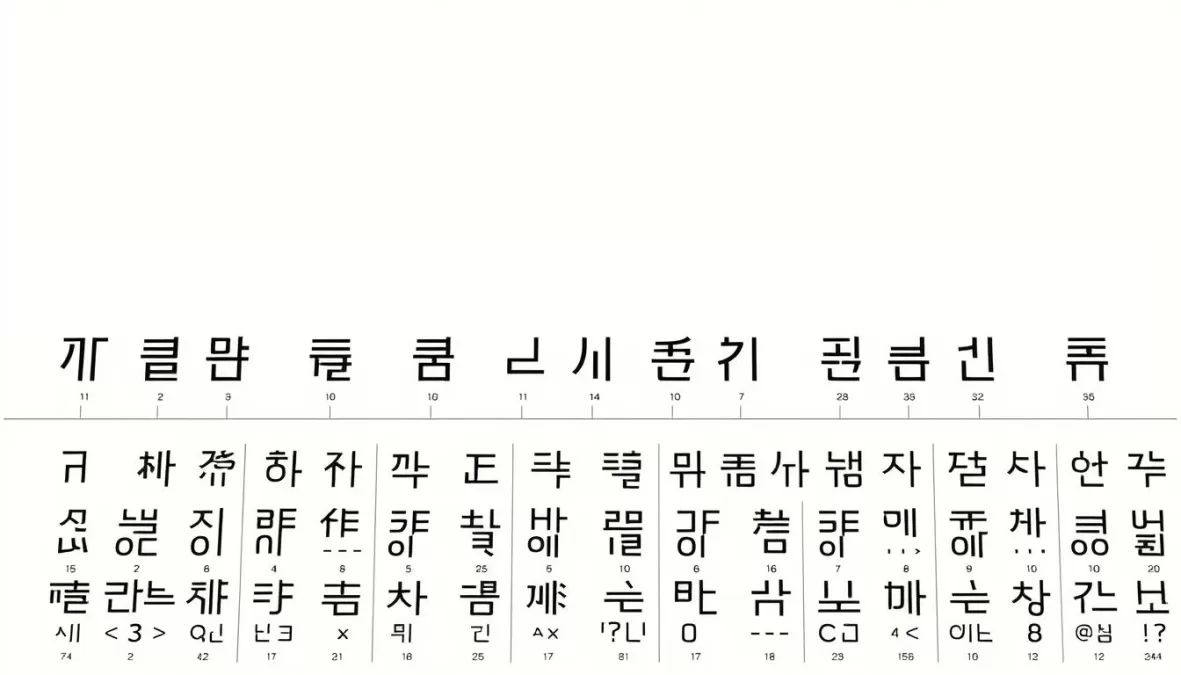Ever wondered which languages push learners to their limits? With over 7,000 languages spoken worldwide, some stand out for their complexity. Whether it’s intricate grammar, unfamiliar scripts, or unique sounds, mastering these tongues takes dedication.
This list blends expert rankings with real-world challenges. You’ll see why Magyar (Hungarian) and 日本語 (Japanese) test even seasoned polyglots. Surprising? Even celebrities like Mark Zuckerberg and Hugh Jackman tackled these linguistic giants.
But difficulty brings rewards. Studies show learning tough languages boosts memory and focus. So if you’re eyeing a new challenge, you’re in the right place. Ready to meet the king of difficult languages? Let’s dive in.
Key Takeaways
- Global linguistic diversity includes some exceptionally challenging languages.
- Difficulty combines grammar, pronunciation, and cultural nuances.
- Learning complex languages enhances cognitive abilities.
- Famous figures have mastered these languages, proving it’s possible.
- Each language offers unique rewards for dedicated learners.
Why Some Languages Are Harder to Learn Than Others
What makes certain languages feel like solving a Rubik’s Cube blindfolded? The difficulty often boils down to three factors: grammar, sounds, and writing systems. While Spanish or French might feel familiar, others demand rewiring your brain.
The Role of Grammar and Script
The Foreign Service Institute (FSI) ranks languages like Arabic and Japanese in Category IV-V, needing 2,200+ hours to master. Why? Hungarian’s 18 grammatical cases—versus English’s three—show how structure can overwhelm. Meanwhile, Japanese blends three scripts, including 2,000+ kanji characters just for basic literacy.
Writing direction matters too. Arabic’s right-to-left flow contrasts with Korean Hangul’s logical alphabet. If your native tongue uses Latin letters, these shifts add layers of complexity.
Tonal Systems and Pronunciation Challenges
Mandarin’s four tones turn “ma” into “mother” or “horse” based on pitch. Vietnamese ups the ante with six tones. It’s like musical training for your tongue. Even non-tonal languages trip learners up—try nailing Icelandic’s rolled R’s or Polish’s “szczęście” (happiness) without choking on consonants.
But here’s the silver lining: tackling these hurdles sharpens memory and problem-solving skills. Ready to meet the linguistic champions that redefine persistence?
Mandarin Chinese: The King of Difficult Languages
Imagine a language where pitch determines if you’re calling your mother or a horse. Mandarin Chinese, spoken by 1.2 billion people, tops difficulty charts despite its global reach. The Foreign Service Institute classifies it as a Category V language, requiring 2,200+ hours to master.
Tones That Change Meaning
One misstep in pitch can turn mā (mother) into mà (scold). Mandarin’s four tones act like musical notes for words:
- Flat (mā): “Mother”
- Rising (má): “Hemp”
- Dipping (mǎ): “Horse”
- Falling (mà): “Scold”
Mark Zuckerberg practiced daily with his Mandarin-speaking in-laws. His tip? “Build sentence patterns, not just vocabulary.”
Thousands of Characters to Master
The writing system uses 50,000+ characters, though 2,000 cover 98% of daily use. Each combines radicals (meaning clues) and strokes:
- Simplified: Used in Mainland China (学 for “learn”)
- Traditional: Preferred in Taiwan (學 for “learn”)
The HSK exam tests proficiency across six levels. Even basic HSK1 requires 150 characters—but these unlock 42% of written content.
With China’s tech sector booming, Mandarin skills offer career gold. Next, we explore Arabic’s flowing script that dances from right to left.
Arabic: A Script Like No Other
Ever tried reading a book from right to left? Arabic flips the script—literally. Spoken by 310 million people, it’s a linguistic marvel with a flowing aesthetic and a grammar system that’s deeply rooted in history.
Right-to-Left Writing System
Arabic’s writing system defies Western norms. Its 28 letters morph into four shapes depending on their position in a word—no capital forms exist. Think of it like this:
- Initial: جـ (jeem at the start of a word)
- Medial: ـجـ (jeem in the middle)
- Final: ـج (jeem at the end)
- Isolated: ج (standalone jeem)
Vowel markings, called tashkeel, are optional diacritics. They guide pronunciation but often disappear in everyday text.
Complex Root-Based Grammar
Arabic grammar revolves around three-consonant roots. Take k-t-b:
- Kitab (book)
- Maktab (office)
- Kataba (he wrote)
Modern Standard Arabic (MSA) is the formal version, but dialects like Egyptian or Gulf Arabic vary wildly. Nobel laureate Gabriel García Márquez learned Arabic to translate Lebanese poetry—proof of its literary pull.
From Dubai’s business hubs to ancient calligraphy, Arabic rewards persistence. Next up: a language that juggles three alphabets at once.
Japanese: Three Writing Systems in One
Have you ever faced a language that uses three alphabets at once? With 128 million speakers, Japanese combines elegant curves, sharp angles, and ancient symbols into one writing system. It’s like learning three languages in one.
Start with hiragana (あ). These flowing symbols spell native words and grammar particles. Then meet katakana (ア), angular and bold, used for foreign vocabulary like コンピュータ (computer). But the real challenge? Kanji.
Kanji characters, borrowed from 8th-century China, pack meaning into strokes. Take 水—shuǐ in Chinese becomes mizu in Japanese, both meaning “water.” Memorizing 2,000+ kanji is just the beginning. Stroke order matters too. Write 田 (rice field) wrong, and it’s like drawing a tic-tac-toe board backward.
Even Hugh Jackman dove into this maze. He credits anime and manga for his study routine. “Furigana,” tiny hiragana above kanji in comics, became his cheat sheet.
Now, layer in keigo honorifics. Talking to a boss? Use sonkeigo (respectful speech). Apologizing? Switch to kenjougo (humble form). The JLPT exam tests these nuances across five levels, with N1 demanding 10,000+ words.
Here’s the twist: Japanese loves loanwords but reshapes them. “Wasei-eigo” terms like サラリーマン (sararīman, salaryman) baffle even native English speakers.
From East Asia to Europe’s grammatical Everest…
Hungarian: A Grammar Lover’s Nightmare
What if a language had more grammatical cases than letters in the alphabet? Meet Hungarian, a Uralic tongue with 18 cases—triple Russian’s six. For 13 million speakers, this structure is natural. For learners? A puzzle where every word shape-shifts.
18 Grammatical Cases Explained
Hungarian doesn’t just use prepositions like “in” or “on.” It bakes location into word endings. Take “ház” (house):
- házban (in the house)
- házból (out of the house)
- házhoz (toward the house)
Even physicist Edward Teller used this precision, coining nuclear terms like “hiányérzet” (a sense of lack) for atomic research.
Vowel Harmony: The Dance of Sounds
Front vowels (e, é, i) and back vowels (a, á, o) can’t mix in one word. Say “könyvet” (book, accusative): “ö” and “e” are both front-facing. Try “bokrot” (bush)—”o” and “a” stay in the back.
But there’s good news: Hungarian spells words as they sound. Master these rules, and you’ll order gulyás (goulash) like a local in Budapest.
Next: Where a simple alphabet hides grammar twists—Korean’s deceptive ease.
Korean: Simple Alphabet, Complex Structure
Would you believe an alphabet designed in a single day could still baffle learners? Korean’s Hangul, created in 1443, is praised for its scientific design—consonants mimic tongue and lip shapes. Yet, its sleek 24 letters hide a grammar maze that trips up even K-pop fans like Chris Tucker.

Hangul’s brilliance shines in its simplicity. Letters like ㄴ (n) mirror your tongue’s roof-tap. But don’t celebrate yet. While hanja (Chinese characters) fade from daily use, honorifics like *해요체* (polite) and *합니다체* (formal) dictate every sentence. Tucker learned this the hard way—his BTS fandom led to mix-ups like “annyeong” (casual hello) with elders.
Korean flips English’s structure: “I pizza eat” (Subject-Object-Verb). Particles 은/는 (topic markers) and 이/가 (subject markers) add nuance. Miss one, and your “I love you” (*사랑해요*) might sound robotic.
| Speech Level | Use Case | Example |
|---|---|---|
| 해요체 | Polite, everyday | “감사해요” (Thank you) |
| 합니다체 | Formal, business | “감사합니다” (Thank you, formal) |
| 반말 | Casual, friends | “고마워” (Thanks) |
Watch for pronunciation traps. Batchim (*받침*) rules change sounds: “ㅂ” in “입니다” (imnida) becomes a soft “m.” Konglish—like “hand phone”—won’t save you either. Instead, try Viki’s Learn Mode during K-dramas. Pause, repeat, and soon you’ll nail *화이팅!* (fighting!).
From K-pop’s global beats to batchim’s subtle shifts, Korean rewards the persistent. Next, Finnish turns vowels into a linguistic symphony.
Finnish: Where Vowels Rule
Ever heard of a language that inspired Elvish in Lord of the Rings? With 5.4 million speakers, Finnish turns vowels into a symphony—where ä and ö won’t mix with a and o. J.R.R. Tolkien modeled Quenya’s flowing sounds after this Uralic tongue.
Vowel harmony groups front vowels (ä, ö, y) separately from back vowels (a, o, u). Try saying “kylmässä talossa” (in the cold house)—every suffix matches the root word’s vowel type. Break this rule, and locals will tilt their heads like confused reindeer.
Don’t let the 15 cases scare you. That’s three fewer than Hungarian! The partitive case alone has six uses, from unfinished actions (“luen kirjaa” – I’m reading a book) to partial quantities (“kahvia” – some coffee).
Watch for consonant gradation too. “Kukka” (flower) becomes “kukan” in genitive—the double k softens. This grammar quirk helped create Tolkien’s Sindarin word “Adûnê” (sunset).
Need survival phrases for Lapland’s Northern Lights?
- “Yksi sauna, kiitos” (One sauna, please)
- “Missä on poro?” (Where’s the reindeer?)
- “Anteeksi, en puhu suomea” (Sorry, I don’t speak Finnish)
Finnish loves compound words like “lentokonesuihkuturbiinimoottoriapumekaanikkoaliupseerioppilas” (airplane jet turbine engine assistant mechanic non-commissioned officer student). Pro tip: There’s no future tense—just say “menen huomenna” (I go tomorrow).
Next: A linguistic time capsule where Vikings would feel right at home.
Icelandic: A Language Frozen in Time
Picture a language unchanged for centuries—Icelandic is that rare linguistic fossil. With just 350,000 speakers, it preserves 10th-century Old Norse better than modern Norwegian keeps its Viking roots. When Daniel Radcliffe read Norse sagas aloud for fans, he stumbled over Eyjafjallajökull—proof even wizards find those sounds daunting.
The grammar would make Ragnar Lothbrok feel at home. Nouns have four cases (nominative, accusative, dative, genitive) and three genders:
| Case | Example (horse) | Translation |
|---|---|---|
| Nominative | hestur | a horse (subject) |
| Accusative | hest | see a horse |
| Dative | hesti | give to a horse |
| Genitive | hests | the horse’s saddle |
Modern tech terms get Viking makeovers. Iceland’s neologism committee coined vocabulary like tölva (computer = number-prophetess) instead of borrowing English words. Even “website” became vefur (web).
“Reading sagas in Icelandic feels like time travel—until you realize ‘gift’ means poison.”
Verbs conjugate by person: ég elska (I love) vs við elskum (we love). Tourism leans into this heritage—signs for þingvellir (parliament plains) or skál (cheers!) transport visitors to saga times.
From Nordic preservation to Slavic complexity, our next stop features Polish’s tongue-twisting consonant clusters.
Polish: The Case for Cases
Can you pronounce szczęście without twisting your tongue? With 40 million speakers, Polish packs a punch with its grammar and tongue-twisting sounds. Even Natalie Portman trained for months to nail its dialect in Cold Mountain.

- Książka (nominative): “The book is good.”
- Książkę (accusative): “I see the book.”
- Książce (dative): “I give to the book.”
Consonant clusters like źdźbło (blade of grass) or szczęście (happiness) sound like a sneeze. Pro tip: Break them into chunks—”sh-ch-ehn-sh-cheh.”
Nasal vowels ą and ę add flair. Say mądry (wise) with a hum, like “mohn-drih.” Chicago’s Polish community—the largest outside Poland—swears by Duolingo’s 3.4 million Polish learners.
“Polish made me rethink every vowel. But nailing dziękuję (thank you) felt like winning an Oscar.”
Watch for false friends: szukać means “to search” in Polish but sounds like Czech’s “to joke.” Try tongue twisters like W Szczebrzeszynie chrząszcz brzmi w trzcinie (In Szczebrzeszyn, a beetle buzzes in the reeds) to level up.
Our final contender builds words like Legos…
Turkish: Agglutination at Its Finest
What if you could build words like Lego blocks? With 81.6 million speakers, Turkish turns word construction into an art form. The famous tongue-twister “Çekoslovakyalılaştıramadıklarımızdanmışsınız” (You were reportedly one of those whom we couldn’t make Czechoslovakian) shows how suffixes stack meaning.
Vowel harmony keeps the structure musical. Front vowels (e, i, ö, ü) and back vowels (a, ı, o, u) never mix in one word. Try saying “güzel” (beautiful)—all front vowels. Now attempt “kahraman” (hero), where back vowels dominate.
Atatürk’s 1928 alphabet reform swapped Arabic script for Latin letters overnight. Today’s 29-letter alphabet includes ç, ş, ğ—sounds that trip up learners. Istanbul Turkish sounds softer, while Anatolian dialects preserve older Ottoman traces.
Noun cases work like suffix magnets:
- Accusative: -i (“kitabı” = the book)
- Dative: -e (“İstanbul’a” = to Istanbul)
TV series like Diriliş: Ertuğrul boosted global interest. Fans learn through subtitles, picking up phrases like “Merhaba” (Hello) and “Teşekkürler” (Thanks).
Business perks? Turkey bridges Europe and Asia. Knowing terms like “ihracat” (export) or “anlaşma” (contract) opens doors. After meetings, locals bond over çay (tea) and simit (sesame bread).
Among Turkey’s 39 minority languages, Turkish stands out for its logical yet complex grammar. Last but not least, tonal simplicity…
Vietnamese: Tones and Monosyllables
How many ways can you say “hello” without changing the word? In Vietnamese, “xin chào” stays the same—but your pitch alters its meaning. With 85 million speakers, this language dances on six tones, each marked by diacritics like acrobatic accents.
Northern dialects use crisp, high sounds: the level tone (ma = ghost) vs. the falling tone (mà = but). Southern speech softens these, blending tones into melodic waves. Miss one, and “phở” (noodle soup) might become “phô” (a type of fabric).
Every word is a single syllable. “Tôi ăn cơm” (I eat rice) stacks three bricks of meaning. Ancient Chữ Nôm script borrowed Chinese characters, but French colonists introduced Quốc Ngữ—today’s Latin-based alphabet with added marks like “ơ” and “ư.”
“Hum the tones like musical notes. Say ‘ma’ as a question, statement, and exclamation—it trains your ear.”
French left flavors in pronunciation: “bia” (bière/beer) and “cà phê” (café/coffee). Order like a local with “một tô phở bò” (beef noodle soup) or “bánh mì thịt” (pork sandwich). Dialects vary wildly—Hue’s sing-song lilt contrasts with Ho Chi Minh City’s rapid-fire clip.
With 1 million learners worldwide, Vietnamese rewards patience. Master the tones, and you’ll unlock a culture where every syllable tells a story.
Conclusion: The Reward of Learning the Top 10 Hardest Languages
Mastering complex languages unlocks doors to new worlds. Beyond grammar puzzles, these tongues sharpen your mind and connect you to vibrant cultures. Studies show they boost memory and problem-solving skills—tools for life.
Polyglots swear by immersion. Watch films, chat with natives, or use apps like Tobian’s speech-recognition courses. Even Zuckerberg’s Mandarin journey started with daily practice.
Progress beats perfection. Celebrate small wins, like ordering phở correctly or reading a Japanese manga panel. Over 10,000 learners have transformed their careers—from diplomacy to tech—through persistence.
Ready to climb your linguistic Everest? Start today. Your brain—and passport—will thank you.





